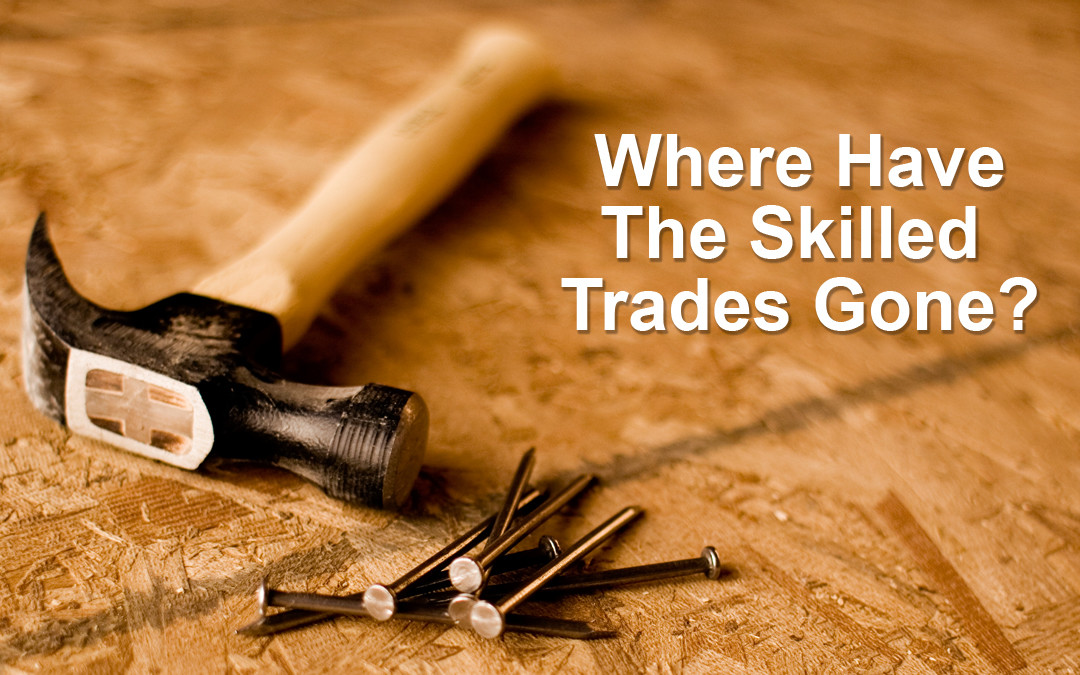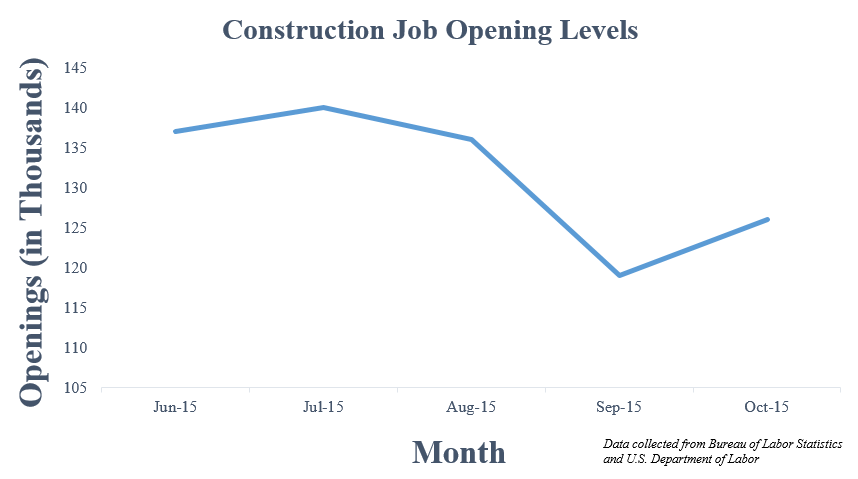Home builders and other construction companies are experiencing an unusual decline in skilled labor. These jobs, including construction, manufacturing, engineering, and more, are skilled trades from which the United States was built. Most recently in June 2015, home construction dropped due to labor shortage, which is typically the time of year when home building is in full swing. There has been a growing amount of work for U.S. builders, but unfortunately, these companies are struggling to find carpenters, electricians, plumbers, and other craftsman needed for the work.
Mike Rowe, former television reality star of Dirty Jobs and current television host for Somebody’s Gotta Do It, has spoken out about the growing problem with available trade jobs and there not being enough workers to fill them. He is promoting skilled trades and trying to change the perception Americans have on these jobs that are so important. It was experiencing these dangerous, but necessary jobs that projected Mike Rowe into the direction of helping U.S. builders, contractors, and various skilled trade companies find trade workers.
Why the Decline in Skilled Trade Workers?
There are a few reasons that have added to the decrease in workers in skilled trades. The first of these reasons starts at high school. High schools are beginning to push their students toward a university education more and more, which has become custom for high school graduates. Most college graduates then move on to jobs outside the trade industry.
Communication Director Ken Silfven of the Michigan Talent Investment Agency said, “Many people still view [skilled trades] as being dirty, lower-level jobs when the truth is that they require great creativity and technical skills, and a lot of skilled trades work is now done with computers.”
Part of the problem is the Baby Boomer retirement wave with not many young people to take the openings, said Cheryl Reed, Director of External Communications of Angie’s List.
Older skilled professionals between the ages of 50 and 69 are beginning to retire, increasing the gap in skilled trade workers as jobs continue to increase. According to Kevin Koehler, President of Construction Association of Michigan, skilled trade shortage has a lot to do with the current work force aging and the small amount of young people considering trades as a practical career option.
“In the next 20 years, three out of four skilled tradesman will be retiring or at the age of retirement,” Koehler said.
Another major reason for the decline happened a few years ago, when the recession affected many manufacturing jobs. Many skilled workers left due to either job cuts or finding work in another field, but now that the recession is over, filling these jobs has become a difficult task.
The Consequences of Labor Shortage
The issue of labor shortage in skilled trades is a domino effect. With the continuing labor shortage, this could ultimately affect business and the way it is conducted. According to a recent report, “The Skills Gap in U.S Manufacturing 2015 and Beyond,” from the Manufacturing Institute, the main problem manufacturers and construction companies are facing deals with meeting customer demand. Customer service is easily the most important element in any business, but with the skills gap increasing, it’s become more difficult to meet that demand.
According to the same report, it is projected that 3.4 million manufacturing jobs are likely to be needed in the next 10 years. Of those jobs, 2 million are expected to go unfilled, furthering the skills gap. Every one of those jobs create 2.5 new jobs in local goods and services.
“If a company can’t get the talent it needs, that means it can’t grow,” Silfven said in regards to the growing issue in Michigan. “[A company] may even decide to leave Michigan for another state if it thinks it can find talent elsewhere.”
With unfilled skilled trades, production could also decrease, a critical component to the competiveness of companies. Even with an influx of young skilled trade workers, maintaining production could be difficult as many incoming workers are expected to have some basic skill deficiencies, according to the Institute of Supply Management. These deficiencies include technical skills and computer skills, which are more commonly used among skilled trades today.
This is why it’s important that businesses invest in proper training and development programs for skilled trades. Gaining and maintaining top talent in these trades is key for these businesses. Koehler said that once an individual learns a trade, it is something that person can do for the rest of his or her life.
Incentives for Skilled Trades
With the demand of skilled trade workers across the nation, some companies looking to hire skilled trade workers are considering increasing their wages to recruit and keep employees. These incentives could bring in more workers.
“[Skilled trades] pay well, and pay is expected to increase,” said Liz D’Aloia, founder of HR Virtuoso. “Plus, there’s plenty of employment opportunities.”
However, some companies are struggling to make ends meet. In recent news, General Motors Company said they could not offer its skilled trade workers retirement incentives because those eligible for retirement would only increase the skills gap once they leave. GM is struggling to find replacements for these jobs that will soon be available, so withholding retirement packages from current workers is GM’s attempt at keeping production going.
“They could just walk right out the door,” Johnny Pruitte, a skilled trades electrician for GM said in an interview with The Detroit News. “It would just shut this operation down.”
To minimize the effect this growing issue has on an entire company and its current workers, institutions are beginning to recognize the importance in apprenticeship programs, workforce education, and the combination of school-based and work-based learning. A variety of high schools have begun introducing juniors and seniors into apprenticeship programs to teach them the skills they could need for a future career early.
Promoting Skilled Trades
What are businesses doing to recruit and maintain skilled trades? According to the Manufacturing Institute, there isn’t one solution to the skills gap. Recently, state governments have been trying to move along the process of promoting skilled trades. In Michigan alone, Gov. Rick Snyder stated there are 100,000 job openings for people with the right skills to fill them. Of that number, there are 6,700 skilled trade jobs that open every year in the state of Michigan and Gov. Snyder hopes to fill these each year through 2022.
In the meantime, construction and manufacturing companies are trying other methods to make sure that the job still gets done. According to Randy Trussell, Marketing Development Manager for LP Building Products (manufacturers of products like LP FlameBlock) construction contractors are now using products that allow a structure to be built more efficiently to save time, labor efforts, and cost.
Several companies have also begun contributing to the education behind skilled labor. Reed said the mission of Angie’s List is to promote these kinds of jobs and bring awareness to them.
“Lots of companies come to Angie’s List as a guy-and-a-truck,” she said. “Some of the best stories we have are those cases, a roofer in Chicago for example, who was working alone with us when he got his first review. Now he owns one of the biggest roofing companies in the greater Chicago area.”
The Construction Association of Michigan is also doing its part to educate people on just how important these jobs are. Koehler said that wherever you go, there are always electricians, plumbers, carpenters and other skilled trades needed.
“The industry is working collectively to bring workers back to the trades,” Koehler said. “We are working to educate parents and educators, that the skilled trades are a viable alternative to college.” Koehler also said that skilled trades provide a great living for workers, where they can earn between $70,000 and $100,000 annually.
Silfven said that Gov. Snyder instituted the Talent Investment Agency to help build Michigan’s talent pipeline by working with students, parents, employers, and educators to raise awareness of the available opportunities within skilled trades. They help those that are interested in skilled trades find their place within the industry.
Future partnerships between educators and business professionals will be key. It’s going to be important that skilled trades are not only promoted, but that businesses and educators ensure individuals have the skills needed for these types of jobs. For those choosing not to attend college, promoting skilled trades as a practical alternative is also important. With the millions of jobs becoming available in the coming years, future employees will need to know how to get these jobs, where they can find them, and also understand the impact they have on the nation.






